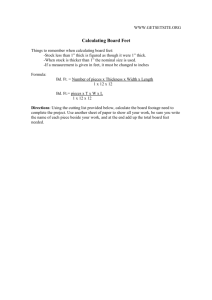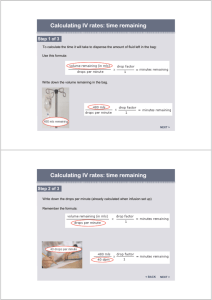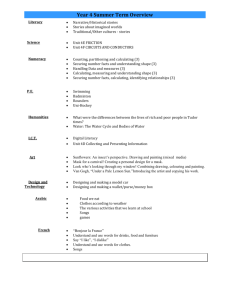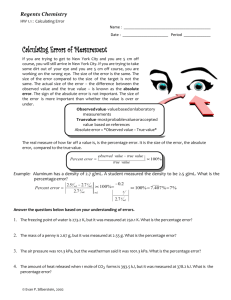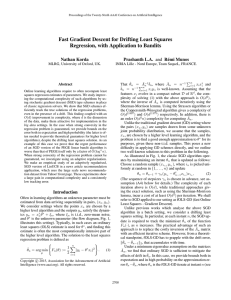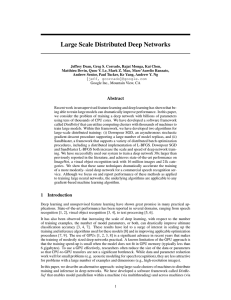Chapter 5
advertisement
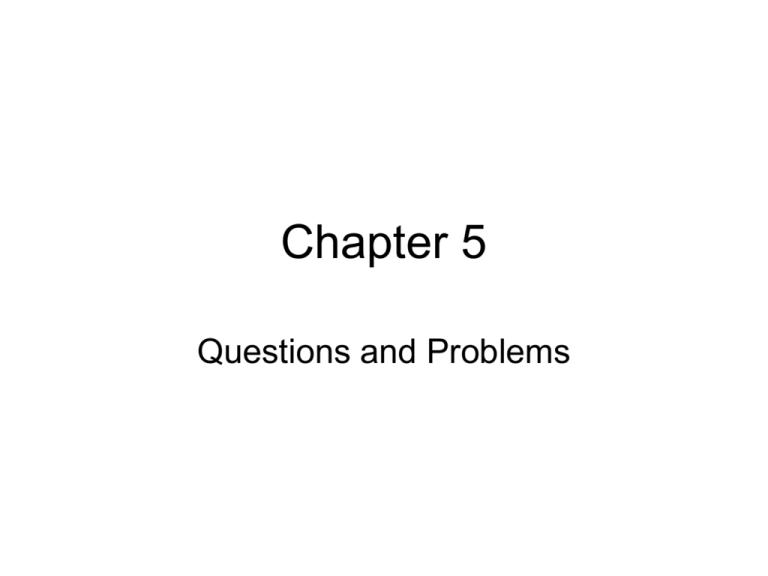
Chapter 5 Questions and Problems • 1. Simple Interest versus Compound Interest • Bandung Bank pays 7 percent simple interest on its savings account balances, whereas Surabaya Bank pays 7 percent interest compounded annually. If you made a 20,000 baht deposit in each bank, how much more money would you earn from your Surabaya Bank account at the end of 10 years? • 1. • • • • • • • • • • • The simple interest per year is: ฿20,000 × .07 = ฿1,400 So after 10 years you will have: ฿1,400 × 10 = ฿14,000 in interest. The total balance will be ฿20,000 + 14,000 = ฿34,000 With compound interest we use the future value formula: FV = PV(1 +r)t FV = ฿20,000(1.07)10 = ฿39,343.03 The difference is: ฿39,343.03 – 34,000 = ฿5,343.03 • 6. Calculating Interest Rates • Assume the total cost of a college education in Singapore will be SGD 250,000 when your child enters college in 18 years. You presently have SGD 43,000 to invest. What annual rate of interest must you earn on your investment to cover the cost of your child's college education? • 6. • To answer this question, we can use either the FV or the PV formula. Both will give the same answer since they are the inverse of each other. We will use the FV formula, that is: • FV = PV(1 + r)t • Solving for r, we get: • r = (FV / PV) 1 / t – 1 • r = (SGD 250,000 / SGD 43,000)1/18 – 1 = 10.27% • 7. Calculating the Number of Periods • At 9 percent interest, how long does it take to double your money? To quadruple it? • 7. • To find the length of time for money to double, triple, etc., the present value and future value are irrelevant as long as the future value is twice the present value for doubling, three times as large for tripling, etc. To answer this question, we can use either the FV or the PV formula. Both will give the same answer since they are the inverse of each other. We will use the FV formula, that is: • FV = PV(1 + r)t • Solving for t, we get: • t = ln(FV / PV) / ln(1 + r) • • • • The length of time to double your money is: FV = $2 = $1(1.09)t t = ln 2 / ln 1.09 = 8.04 years The length of time to quadruple your money is: • FV = $4 = $1(1.09)t • t = ln 4 / ln 1.09 = 16.09 years • 9. Calculating the Number of Periods • You're trying to save to buy a new €150,000 Fen-art. You have €40,000 today that can be invested at your bank. The bank pays 4 percent annual interest on its accounts. How long will it be before you have enough to buy the car? • 9. To answer this question, we can use either the FV or the PV formula. Both will give the same answer since they are the inverse of each other. We will use the FV formula, that is: • FV = PV(1 + r)t • Solving for t, we get: • t = ln(FV / PV) / ln(1 + r) • t = ln (€150,000 / €40,000) / ln 1.04 = 33.70 years • 17. Calculating Present Values • Suppose you are still committed to owning a €150,000 Ferrari (see Question 9). If you believe your mutual fund can achieve an 18 percent annual rate of return and you want to buy the car in 10 years on the day you turn 30, how much must you invest today? • 17.To find the PV of a lump sum, we use: • PV = FV / (1 + r)t • PV = €150,000 / (1.18)10 = €28,659.67 • 18. Calculating Future Values • You have just made your first 250,000 yen contribution to your retirement account. Assuming you earn a 10 percent rate of return and make no additional contributions, what will your account be worth when you retire in 45 years? What if you wait 10 years before contributing? (Does this suggest an investment strategy?) • • • • 18.To find the FV of a lump sum, we use: FV = PV(1 + r)t FV = ¥250,000 (1.10)45 = ¥18,222,620.92 FV = ¥250,000 (1.10)35 = ¥7,025,609.21 • Better start early! • 19. Calculating Future Values • You are scheduled to receive 402,500 rupees in two years. When you receive it, you will invest it for six more years at 6.5 percent per year. How much will you have in eight years? • 19. We need to find the FV of a lump sum. However, the money will only be invested for six years, so the number of periods is six. • FV = PV(1 + r)t • FV = INR 402,500(1.065)6 = INR 587,304.77

